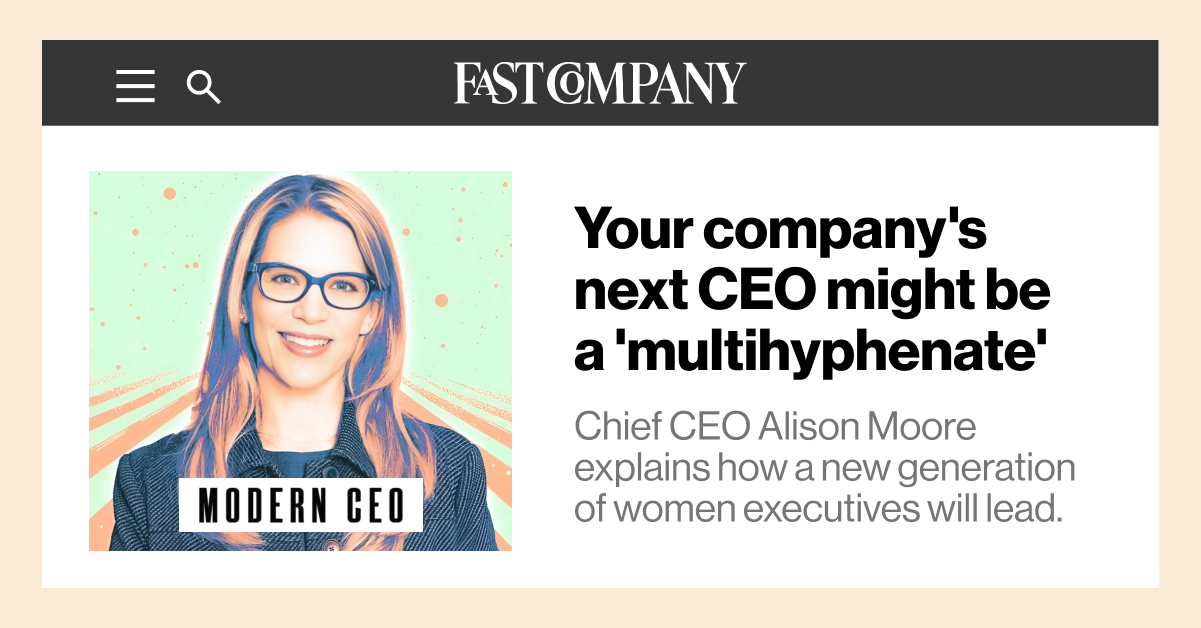As more companies shift away from remote work and back to a traditional office setting, employees are struggling to adjust to the ways of the water cooler. One generation more than others: The young workers just beginning their careers.
A recent survey of more than 1,200 business leaders found that 4 out of 10 don’t believe Gen Z is ready for the workforce. Of that group, 94% say they avoid hiring Gen Z, citing their lack of work ethic and communication skills.
But this narrow-minded attitude is a recipe for failure, both for the success of leaders themselves and the long-term growth of their companies, considering 30% of the workforce will belong to the Gen Z cohort by 2030. If anything, leaders have an extra responsibility to mentor and train this generation since many young workers launched their careers during the height of pandemic office closures.
"Many Gen Zers started their corporate lives at home, and may have missed out on essential unwritten rules of the office," says Amanda Fajak, CEO of ZRG's Walking the Talk consulting firm. There are norms that older generations may take for granted that Gen Z hasn’t experienced yet.
For instance, it’s easy to write an email or send a text during a virtual meeting, but multitasking is much more distracting during an in-person meeting. “Companies need to retrain Gen Zers on being present and the art of focus, like listening deeply, participating in discussions and engaging with each other,” says Fajak. Leaders can enable this themselves by keeping their phone and laptops out of sight, and setting clear ground rules for meetings, asking for focused attention.
Fajak recommends avoiding virtual meetings whenever possible and modeling the importance of informal conversations, or “watercooler talk,” by inviting people to your desk to brainstorm.
“Gen Zers are used to the chat function on technology versus human connection,” she says. “The idea of the watercooler (or coffee station) is to create a convening point where relationships are built. Don’t just engage with people in meetings — invest in conversation to build connections and show them how valuable engaging informally can be.”
This can also be achieved by shortening meetings or leaving more time between meetings, which enables what Fajak calls ‘corridor conversations’ where knowledge-building is shared and questions can be asked more informally. They shouldn’t be seen as a distraction between tasks, but a key part of the workday.
Young workers may also need a crash course on the most mundane practicalities of office life. Don’t assume they know how to use your office facilities, hot desks, and meeting rooms, even if they have been with you for two years, Fajak says. Make sure they understand the support resources and staff available to them.
Explanations Are Essential
The “why” behind these unwritten rules is even more important than the rules themselves. According to Deloitte’s Gen Z and Millennial Survey, flexibility/adaptability was the most valued trait for Gen Z employees, and 77% of remote or hybrid Gen Z employees would look for a new job if asked to return on-site full time.
But without experiencing the benefits of working in the office, young workers may not know what they’re missing, from “direct observation of a colleague you work alongside to observing your manager gracefully handle an objection during a hallway conversation,” says Cara Shortsleeve, Founder and CEO at The Leadership Consortium accelerator, who has also managed global teams at Google and YouTube.
In addition to providing serendipitous learning, being present physically can also increase exposure to potential mentors and sponsors, a proven necessity for women who seek to rise in leadership ranks. “Time ‘apart’ might inadvertently limit access,” says Shortsleeve, especially when those individuals might be outside of the direct reporting line or department and harder to connect with virtually.
When communicating these benefits, leaders can acknowledge Gen Z’s own values and help to empower them in decision-making. If two values are conflicting, like flexibility and professional growth, Shortsleeve suggests leaders structure a message like this:
“As a reminder, our mission is [xxx]. You are an important part of this team and your contributions [xxx] are pivotal to our success. I know how important flexibility is — and I also know how important growth is for you. At times, these two values can be at odds. The flexibility you want [xx, yy, xx] means you don’t get access to [yyy] {synchronous work, learning via osmosis, etc}. I’d love to invite you to help me solve this. I want you to maintain flexibility and also want you to [yy] {come to the office, etc} so you can develop faster and have more impact. How would you propose we meet both of our objectives?”
The Business Case for Better Gen Z Mentorship
According to a recent Gallup survey, more than half of Gen Z employees report being “not engaged” at work, higher than any other generation — but they also have the lowest percentage of any generation of being “actively disengaged,” meaning their managers and mentors still have the opportunity to establish stronger relationships and create exciting opportunities for them, which can lead to long-term company growth and innovation.
Gen Z values ethical business and inclusion in the workplace, and those traits can continue to push their leaders and organizations forward in positive ways when they’re more actively engaged. When leaders can communicate their values to Gen Z clearly, and invite them to bring their own to the table, the opportunities for cross-generational learning multiply. “The most effective leaders create the conditions for others to thrive,” says Shortsleeve.
By taking the time to teach the youngest generation unwritten rules of the office, today’s leaders can meet their short-term business objectives while preparing the workforce for success for generations to come.



